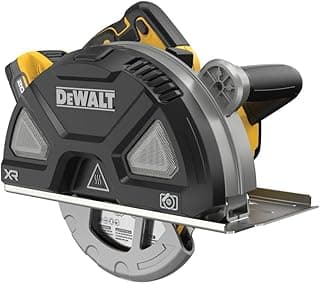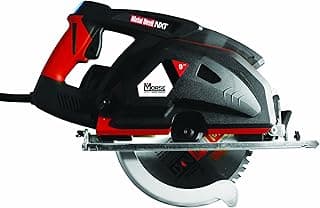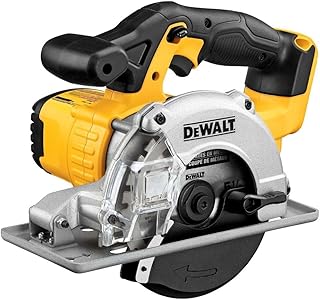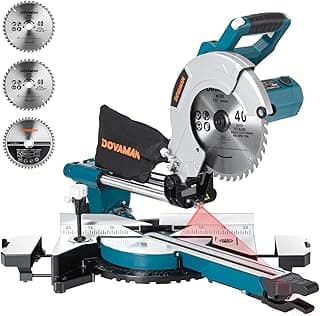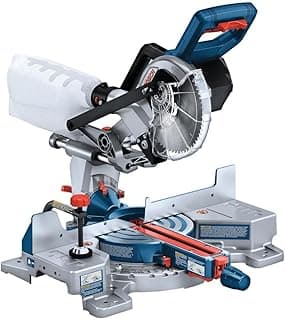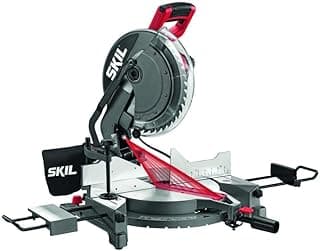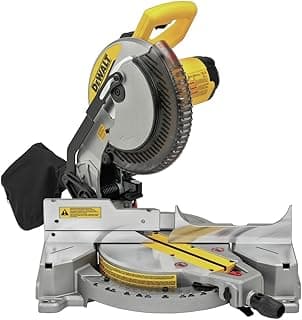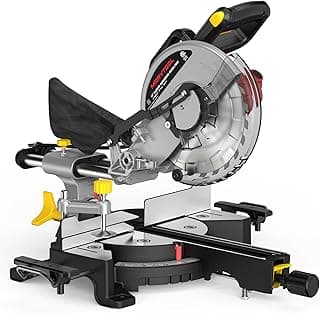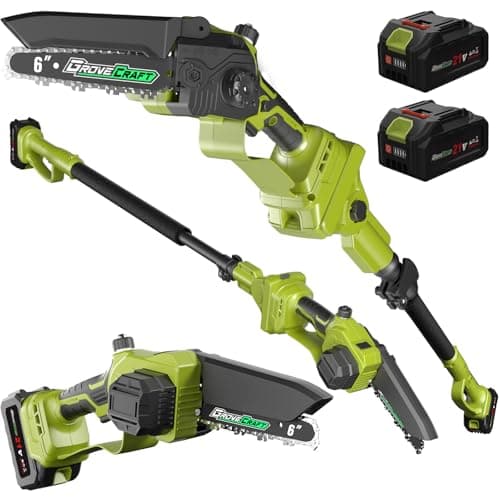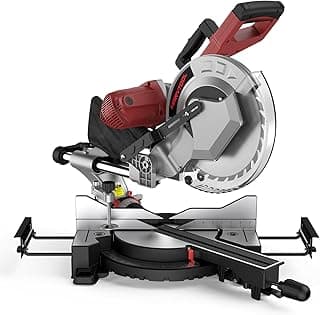When it comes to cutting metal, you don’t want to waste time on subpar tools. But how do you know which one is right for your workshop? Keep reading, because we’re breaking down everything you need to know about the best metal cutting circular saw.
Imagine slicing through steel sheets with ease, achieving clean edges every time—sounds ideal, right? That’s why choosing the right saw is crucial. In this guide, we’ll also explore the best metal cutting sawzall blades for precision cuts, compare the best metal cutting saw options on the market, and even touch on the best horizontal band saw for metal cutting for those heavy-duty tasks. By the end, you’ll have all the insights to make an informed purchase.
Top Picks
Best Power: DEWALT 20V MAX XR 7-1/4 Inch Metal Cutting Circular Saw Kit
The DEWALT 20V Max metal cutting circular saw stands out for its impressive power and efficiency. With the ability to cut up to 214 20-gauge steel studs and 105 feet of corrugated decking, it handles demanding metal cutting tasks with ease. The brushless motor delivers up to 1,400 mwo of power, providing consistent performance while reducing maintenance. Its versatility is enhanced by a 43% greater depth of cut at 90° compared to previous models, and the integrated chip collector keeps the workspace cleaner during extended use.
From a customer perspective, users appreciate its robust cutting ability and the reduced cleanup thanks to the chip collection system. Some note that relying on a single battery may limit runtime for longer projects, but overall, the saw is praised for its reliability, power, and ability to tackle heavy-duty metal cutting efficiently.
Best Efficiency: Milwaukee 2982-21 M18 FUEL Lithium-Ion Metal Cutting 8 in. Cordless Circular Saw Kit
The Milwaukee M18 metal cutting circular saw offers reliable performance for professional metalworking tasks. Powered by an 18V M18 REDLITHIUM battery and a brushless motor, it delivers consistent cutting power while maintaining energy efficiency. The 8-inch round blade with 42 teeth is designed for smooth and precise metal cuts, and the saw’s compact 23" x 13" x 12" dimensions make it reasonably portable despite its 12.1-pound weight. The combination of plastic and rubber composite in the handle ensures a firm, comfortable grip during extended use.
From a user perspective, the cordless design and brushless motor receive high praise for convenience and durability, while the lifetime warranty adds peace of mind. Some users mention that the saw’s weight can make prolonged operation tiring, but overall, it is valued for its consistent cutting performance, efficiency, and robust construction.
Best Connectivity: DEWALT 20V MAX XR 7-1/4 in. Metal Cutting Circular Saw
The DEWALT 20V Max metal cutting circular saw combines raw power with smart functionality. Its brushless motor delivers up to 1,400 mwo of cutting power, capable of handling up to 214 20-gauge steel studs or 105 feet of corrugated decking. The saw provides a 2-5/8 inch depth of cut, suitable for a variety of metal applications, while the integrated chip collector helps maintain a cleaner workspace. An electronic brake enhances safety by stopping the blade in less than a second after releasing the trigger. The Tool Connect+ technology offers connectivity through the DEWALT Site Manager app, giving real-time insights into tool utilization, location, and safety.
From a customer perspective, users value its combination of power, precision, and modern connectivity. While the single battery may limit continuous operation during extended projects, the saw’s performance, clean operation, and digital management features make it highly practical for professional metalworkers who prioritize efficiency and control.
FAQs
Is 18 or 24 TPI better for metal?
TPI, or teeth per inch, determines the fineness of a cut. For metal cutting, an 18 TPI blade is ideal for thicker metals because it removes more material quickly, reducing cutting time. However, it produces a rougher edge and can generate more heat. On the other hand, a 24 TPI blade offers finer cuts and smoother edges, making it perfect for thinner sheets or projects requiring precision.
The rule of thumb is: the thicker the metal, the lower the TPI; the thinner the metal, the higher the TPI. Using the correct TPI ensures longer blade life and cleaner cuts. Always pair the TPI choice with proper cutting speed and lubrication to prevent overheating and blade wear.
Do you need a special circular saw to cut metal?
Yes, cutting metal safely and efficiently requires a saw designed or adapted specifically for metal. Regular wood-cutting circular saws are not built for the density and hardness of metals—they can overheat, dull rapidly, or even become dangerous.
A metal cutting circular saw uses a high-speed steel or carbide-tipped blade, often with variable speed control, designed to handle metals like steel, aluminum, and copper. Additionally, features like robust motor power, reduced vibration, and heat-resistant construction are essential. For thicker or tougher metals, pairing the saw with cutting oil or lubricant extends blade life and improves cut quality.
Which circular saw is better, DeWalt or Milwaukee?
Both DeWalt and Milwaukee produce top-tier metal cutting circular saws, but the choice depends on priorities.
-
DeWalt: Known for reliability, ergonomic designs, and excellent motor longevity. DeWalt saws are often slightly lighter, which reduces fatigue during extended use.
-
Milwaukee: Offers higher torque and often faster cutting speeds. Milwaukee saws excel in industrial environments and heavy-duty applications.
In short, if comfort and long-term reliability are your main concerns, DeWalt is a safe bet. If speed and raw cutting power are critical, Milwaukee might edge out slightly. Either brand will perform well with proper blades and maintenance.
How thick can a metal circular saw cut?
The cutting thickness depends on the saw model and blade used. Most metal cutting circular saws handle sheets from 1/16 inch up to around 1/2 inch of mild steel. Specialized high-power models, especially those with carbide-tipped blades, can cut even thicker metals up to 1 inch.
Factors affecting cut thickness include:
-
Blade diameter: Larger blades reach deeper cuts.
-
Motor power: Higher amps allow cutting thicker metal without stalling.
-
Blade material: Carbide or high-speed steel extends cutting capacity and blade life.
Always check manufacturer specifications and use appropriate lubrication to maintain blade performance and avoid overheating.
Final Thoughts
Choosing the best metal cutting circular saw requires understanding blade TPI, saw type, and cutting capacity. Whether you’re cutting thin sheets with a 24 TPI blade or thicker steel with an 18 TPI option, the right saw ensures precision, safety, and efficiency. Top brands like DeWalt and Milwaukee offer reliable solutions, while additional tools like specialized sawzall blades or horizontal band saws expand your capabilities. Invest wisely, and every metal project will be faster, cleaner, and hassle-free.

